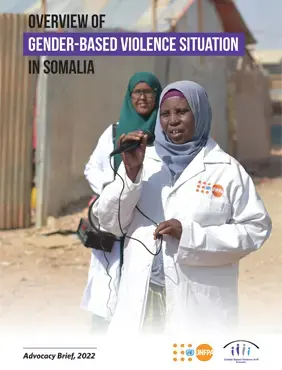The already large number of recorded incidences of Gender-Based Violence (GBV) in 2021 continued to increase in 2022, especially for sexual violence and Intimate Partner Violence (IPV), due to multiple displacements, flooding, droughts and armed conflicts. An estimated 4.3 million people have been affected by natural disasters and armed conflict, while some 554,000 have abandoned their homes in search of water, food, and pasture in December 2021. The number of people requiring humanitarian assistance in 2022 has been estimated to 7.7million . The delayed electoral process and tensions related to power struggles among political actors reinforced insecurity and limited mobility for people to seek livelihoods. As the drought and food insecurity persist in Somalia, women, and girls experience alarming levels of poverty and economic depravity: a precursor for increased vulnerability to GBV.
Since November 2021, over 600,000 people have been displaced due to the unprecedented drought. Rising food prices, sporadic conflict over resources, limited humanitarian support and interrupted market systems have all exacerbated the crisis, eroding livelihoods and crippling traditional coping mechanisms across the country, thus affecting the livelihoods of Somalia’s population . The drought has resulted in large scale crop failure and the death of livestock, impacting livelihoods and food supply. As a result, there have been increasing incidences of IPV, rape, sexual exploitation and harassment, and abuse, with higher impact on women and girls living with disabilities. In Internally Displaced Persons (IDP) camps and host communities’ inadequate physical infrastructure; distance to water points and markets; health facilities; schools; poor lightning; lack of doors on toilets; and lack of disaggregation of sanitary facilities are all major factors resulting in the increase of GBV exposure. Distance to distribution centers and lack of specific measures to ensure women’s inclusion and participation in food distributions continue to worsen levels of exposure of women and girls to GBV risks.


